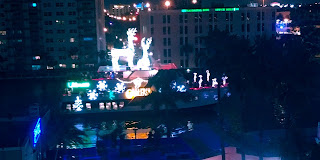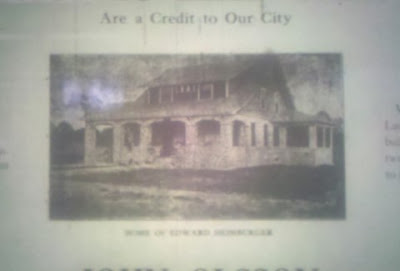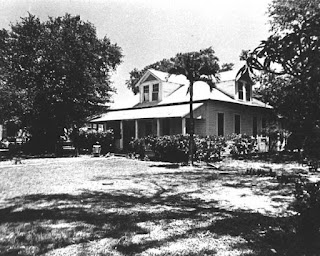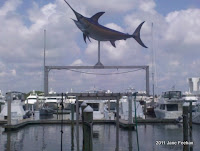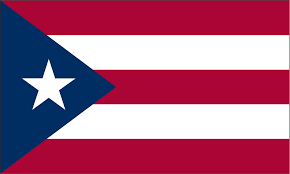 |
| Florida State Archives/Dept. of Commerce |
By Jane Feehan
A quiet drug store on Las Olas served as the unofficial hub
of that boulevard long before trendy restaurants and nightspots opened their
doors to the beau monde of Fort Lauderdale.
Werner Betz and his wife Marge opened the Chemist Shop Nov.
19, 1956, at 817 E. Las Olas Blvd. It
wasn’t long before the drugstore and its 40-seat restaurant drew nation-wide
attention. Only months after the Chemist Shop opened, industry publication Drug
Topic, called it “America’s most unusual drugstore.” More on the why after some
background.
Wisconsin born Betz, son of a Methodist minister and educated
as an industrial engineer at Cornell University, lost his job during the depression
and followed it with a successful sales career. He was living in New Jersey (some
accounts say New York) when three Florida friends, Al Watson, Ed Beyhan and William
Maus (a familiar name to many of us in town), convinced Betz to open a business
in Fort Lauderdale. He worked at a pharmacy in New Jersey without
a salary for nearly a year to become familiar with the business. It paid off.
With wheels in motion for his own business, Betz moved to
Fort Lauderdale in 1955. Acquaintance Welles Squires, a designer of futuristic
cars for General Motors, sketched a design for the store. Robert Jahelka served
as architect for the project and brought it into reality with an Old English
motif storefront and interior.
 |
Florida State Archives/
Dept. of Commerce |
Betz approached the business with a winning philosophy: “offer
more variety and a wider range of prices than any other store.” And so, he did.
The Chemist Shop offered an array of difficult-to-find products: special soap
for latex swimsuits, bees wax candles, French perfume, German cologne; a torsion
balance to measure thickness of lipstick, soap from Spain, Egyptian
pewter-washed copper, Droste chocolate from Holland; rhinestone dog collars and dog perfume. They also sold magnetic hurricane tracking charts and fresh flowers … one-stop
excellence for the discerning shopper. (A Texan offered Betz a $1000 a month to oversee the development of a Chemist Shop in the Lone Star State but Betz turned it down).
Another feature of the Chemist Shop, perhaps as popular as the
merchandise, was its 40-seat restaurant, Fantasy Fountain. Betz later said he often
counted as many as 60 waiting to get a table. Lunch was served during most of
the day until 4:30 and it could be a shrimp salad plate for $4.95, the Las Olas
Sandwich (chicken, bacon, tomato and Roquefort dressing on toast) for $3.95, clam chowder
for $1.25 and an array of ice cream sodas with house-made syrups. Prices were
above average for the day.
Movers and shakers about town, including former Mayor Virginia
Young, met at the Fountain daily. With tables set unofficially aside for power
broker breakfasts, the Chemist Shop became the “hub of Las Olas Boulevard.”
Werner Betz ran the store with his brother Gerhardt until
1980. (Gerhardt purchased Gore Nursery at N.W. 9th Ave. where his
two sons, Bob and Frederick worked, another family business). In its early days, the Chemist Shop employed
29 during the season and 17 during summers.
Bernard Schuster, one of three Chemist Shop pharmacists, bought
the store through a stock transaction in August 1980, making him sole owner.
Werner died just months later, in October that year in North Carolina. Gerhardt Betz died January 8, 2008.
The business climate changed during the 1980s and 90s. The
Las Olas Merchant Association wanted to elevate the types of stores, clientele and shopping experience on the Boulevard. Bernie and wife Virginia (Ginger) were asked to
remodel the Chemist Shop and keep it open until 9 p.m. According to the Sun-Sentinel,
rent was raised to $11,000 for its 6,000 square feet, making it unaffordable to
operate. Bernie and Ginger closed that location in 1997. They moved the Chemist
Shop to the Nations Bank Building on S.E. 3rd Avenue where they
rented 1,980 square feet. Business dropped off by half at the store and restaurant;
the breakfast club moved to Café La
Bonne Crepe (which remains on Las Olas).
Bernie and Ginger sold the pharmacy in 1999 to Eckerd Corporation (a store sat nearby) where they kept Chemist Shop employees with their seniority and
pay. Bernie, a Fort Lauderdale High School grad, died in 2008. I haven’t found
anything more on Ginger.
The Chemist Shop, once emblematic of successful Fort
Lauderdale family-owned businesses thus closed but remains fondly in the
memories of many. Werner and Marge Betz, and later Bernie and Ginger Schuster, ran
a unique and much-loved store, one seldom see anywhere today.
Note: Another Chemist Shop is open on Las Olas at the 1100
block but bears no resemblance or connection to the original.
Fort Lauderdale News, Jan. 26, 1957
Fort Lauderdale News, July 21, 1957
Fort Lauderdale News, Jan. 18, 1979
Fort Lauderdale News, Aug. 7, 1980
Fort Lauderdale News, Oct. 26, 1980
Fort Lauderdale News, March 5, 1984
Fort Lauderdale News, Oct. 16, 1988
Sun-Sentinel, Jan. 9, 1992
Sun-Sentinel, July 23, 1997
Sun-Sentinel, Jan. 6, 1999
Sun-Sentinel, Nov. 21, 2008
Tags: Chemist Shop, Fort Lauderdale in the 1950s, Fort Lauderdale in the 1990s, Fort Lauderdale history, history of Fort Lauderdale, Jane Feehan






